A weekend in Charlestown: What do do, where to eat, where to stay — and what to sail
Keen sailors ahoy! Octavia Pollock shares tips for those looking to enjoy a watery getaway in Charlestown, on Cornwall's south coast.
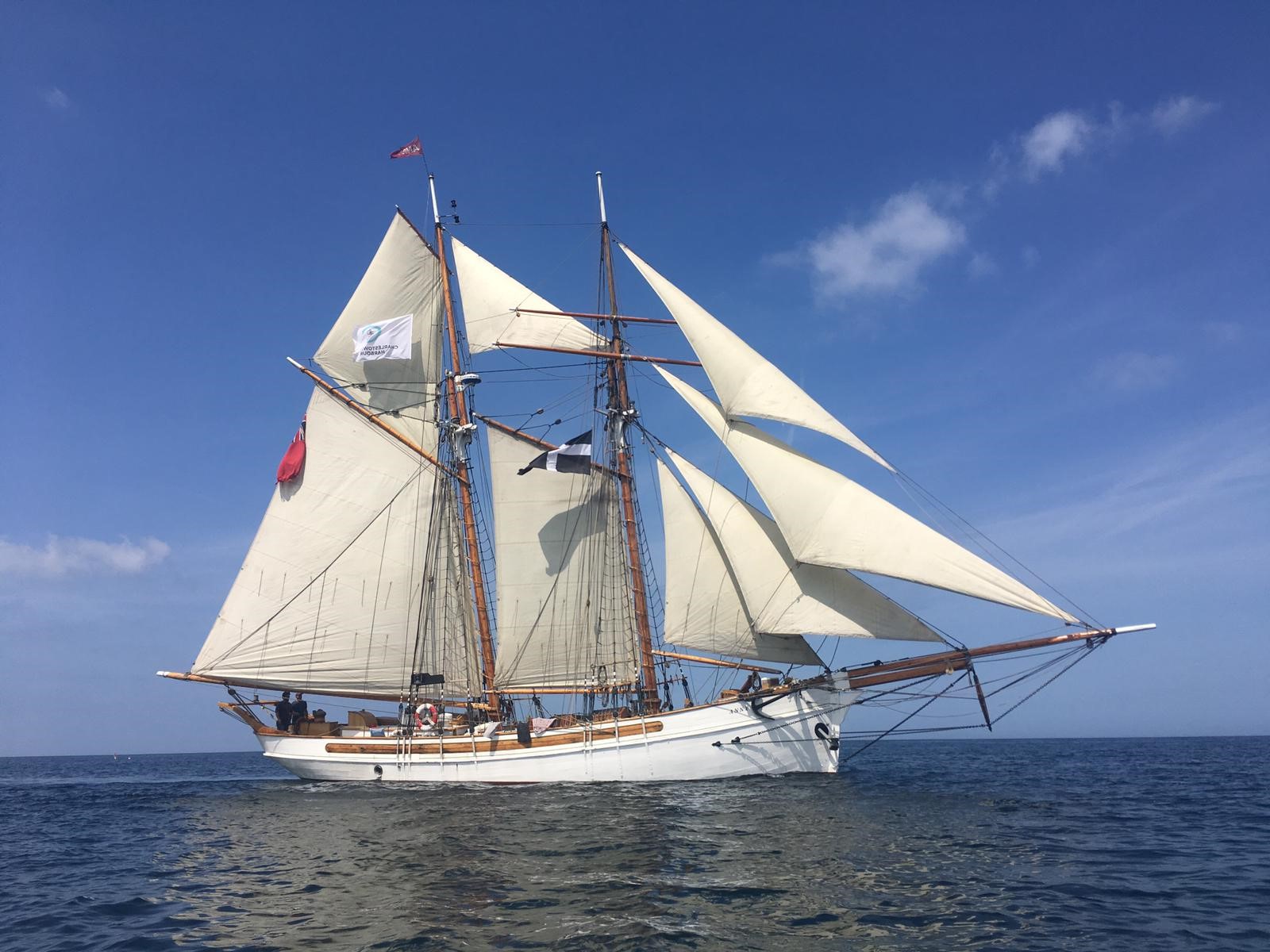
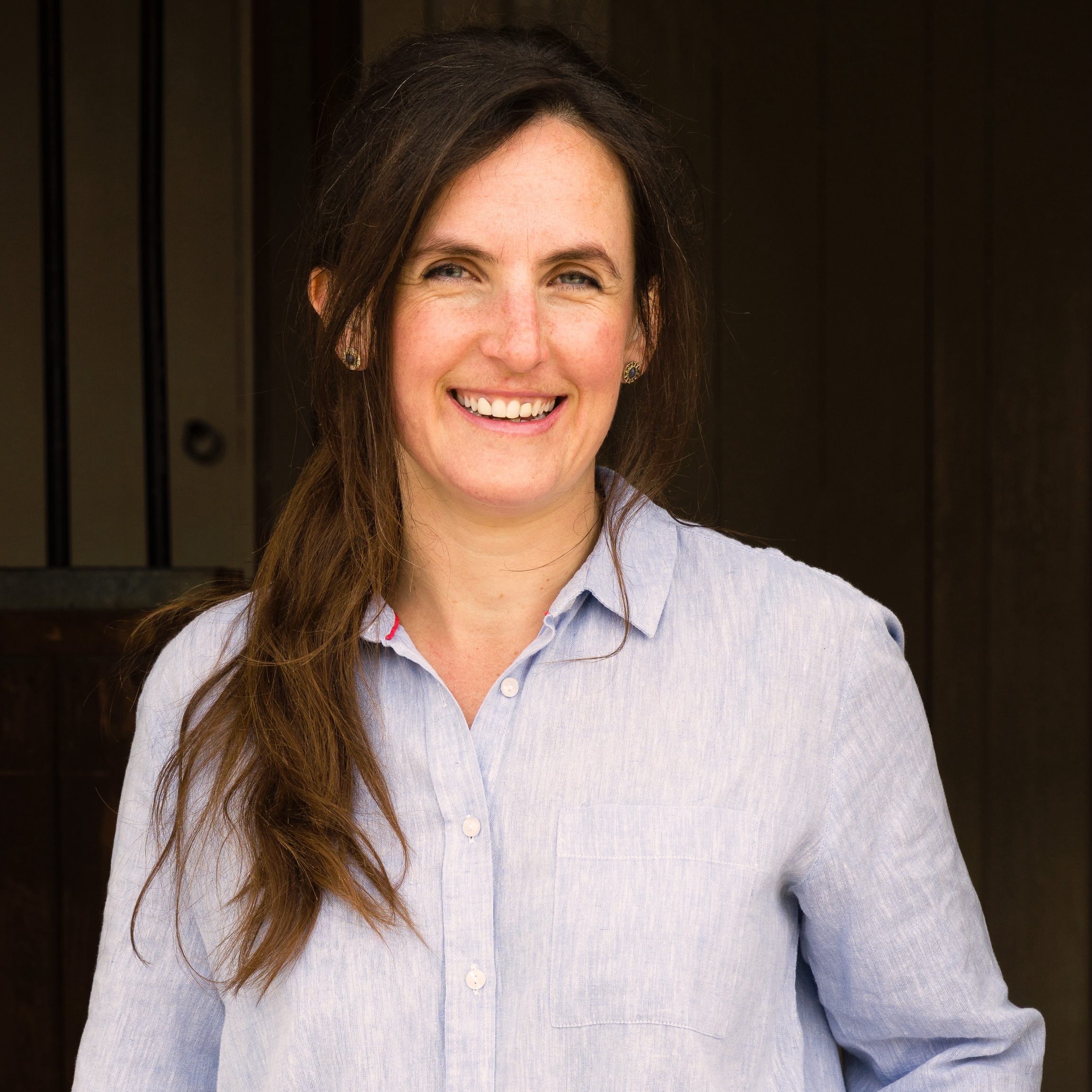
Clinging on tight to the rigging just below the main yard, I looked down at the rollers of clear green water sweeping along the white sides of the ship, beneath her polished wood and neatly slaked lines. Above me, perched nonchalantly on the yard, was bosun David, moving to the motion of the swaying mast as the hull lifted and fell on the waves. A few fathoms away lay Charlestown, with its grey stone harbour, white-painted cottages and sheltering cliffs.
I was aboard Anny, a topsail schooner available for day and overnight charters from the south Cornish village, well known to viewers of Poldark, The Three Musketeers and The Onedin Line. So little has Charlestown changed in 200 years that it is a favourite with location scouts and its unpolished charm makes it a delight to visitors, too. With Anny and her consort Irene, a 1907 West Country trading ketch, moored off shore and not an ugly modern steamer in sight, it is easy to imagine oneself back in time.
Because it wasn’t yet possible for vessels as large as Anny to enter the harbour, after a wall collapsed last winter, we were collected by tender and whizzed over the waves to board, clambering up her side to be greeted by the captain, Tony. Coffee and pastries from cook Morag eased us into the passage, pastries I swiftly tried to work off by hauling on sheets and halyards with Dave and able seaman Jamie. Anny was built in Denmark in 1930 and converted from a fishing boat to her present state, with comfortable cabins and efficient galley, in the 1970s, but she is still operated the old-fashioned way, with muscle power to harness the wind.
Guests can choose to relax and enjoy the view or get involved; the latter is always my choice. Dave proved an excellent teacher, elucidating the secrets of foresail, staysail, inner jib, halyard and sheet and advising on the proper technique for hauling; it’s not merely brute strength. Anny is a big ship, stable and capable of handling big seas, slow to respond to the helm and not capable of sailing as close to the wind as a smaller yacht, but with infinite charm in her golden wooden decks and webs of rigging.
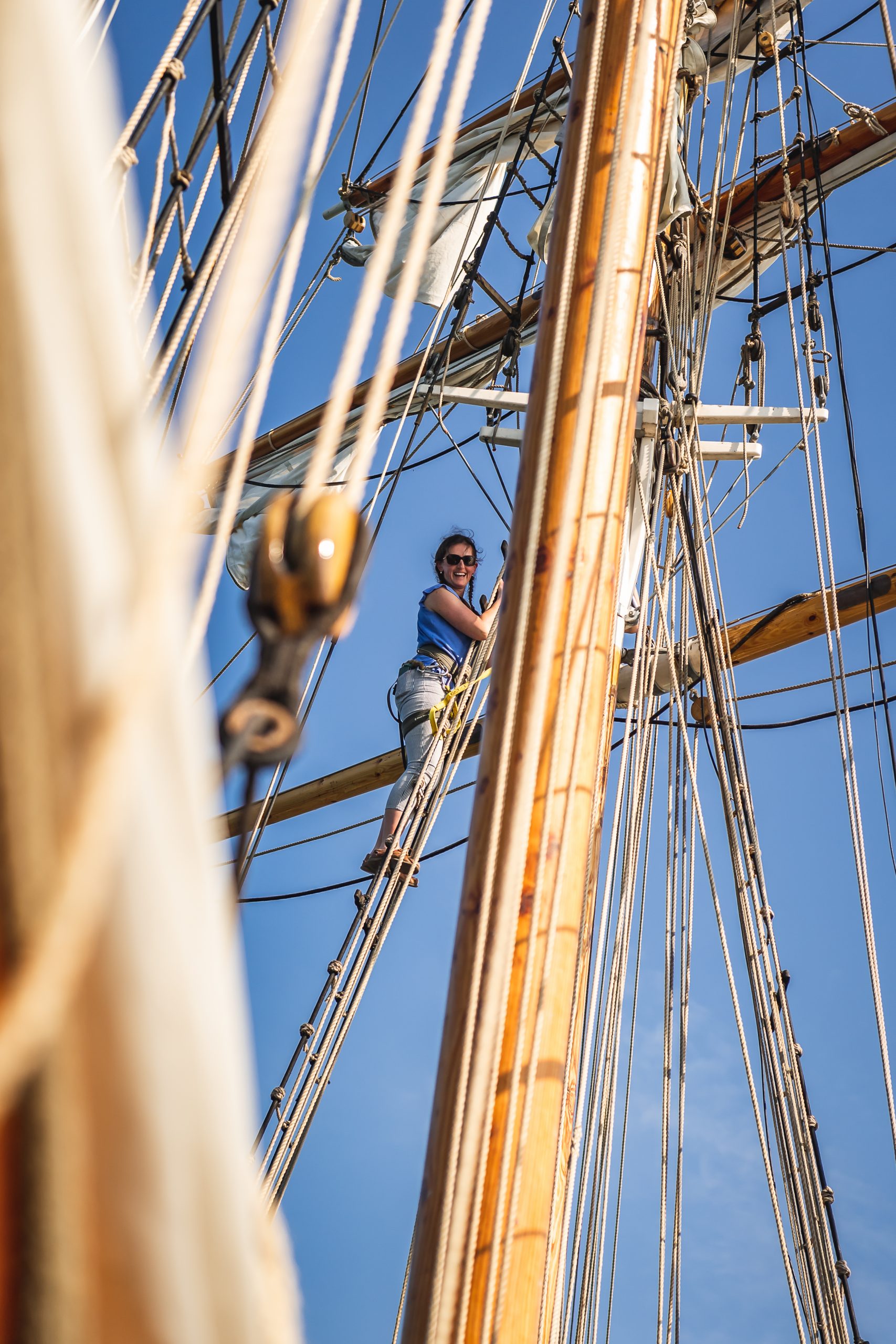
There wasn’t a great deal of wind to harness, but with the occasional help of the engine we tacked around Gribben Head and into Polridmouth Cove. The white sands were surprisingly busy, considering the beach is only accessible by foot or boat, but such was the welcome sunshine that many people had made the trek from inland. Several boats, too, were anchored, but Anny was without doubt the most elegant. We roughly furled the sails and let out the heavy anchor chain, before Morag, Dave and my intrepid companion, top photographer Sarah Farnsworth, jumped into the clear — but very cold — water.
Freshly made asparagus tart was the perfect post-swim sustenance, eaten in the cosy saloon of polished wood and blue upholstery, across from two bunk beds. Further bunk beds are in a cabin further aft, with the crew sleeping in very cosy berths at bow and stern. It’s possible to charter Anny for several days, with seven guests and four crew, exploring the coast, enjoying sunrise and sunset from the deck and listening to tales of ocean voyages. It sounds magical.
Running before the failing wind on an increasing swell, we made it safely back to anchor off Charlestown, whereupon I persuaded Capt Tony to let me climb the ratlines. The swell did make me question my sanity at a few points — because we were anchored, rather than sailing, there was no pressure on the rigging, so it shivered quite disconcertingly — but once I was safely clipped on at the top, I could enjoy the view and even relax. Not sure I’d be volunteering to reef in a storm, however.
Sign up for the Country Life Newsletter
Exquisite houses, the beauty of Nature, and how to get the most from your life, straight to your inbox.
A brilliantly judged passage through the breaking waves at the harbour entrance saw us safely back on firm land, ready for a stiff gin & tonic and a viewing of Port Isaac folk-singing tale Fisherman’s Friends. A perfect day.
Where to eat in Charlestown
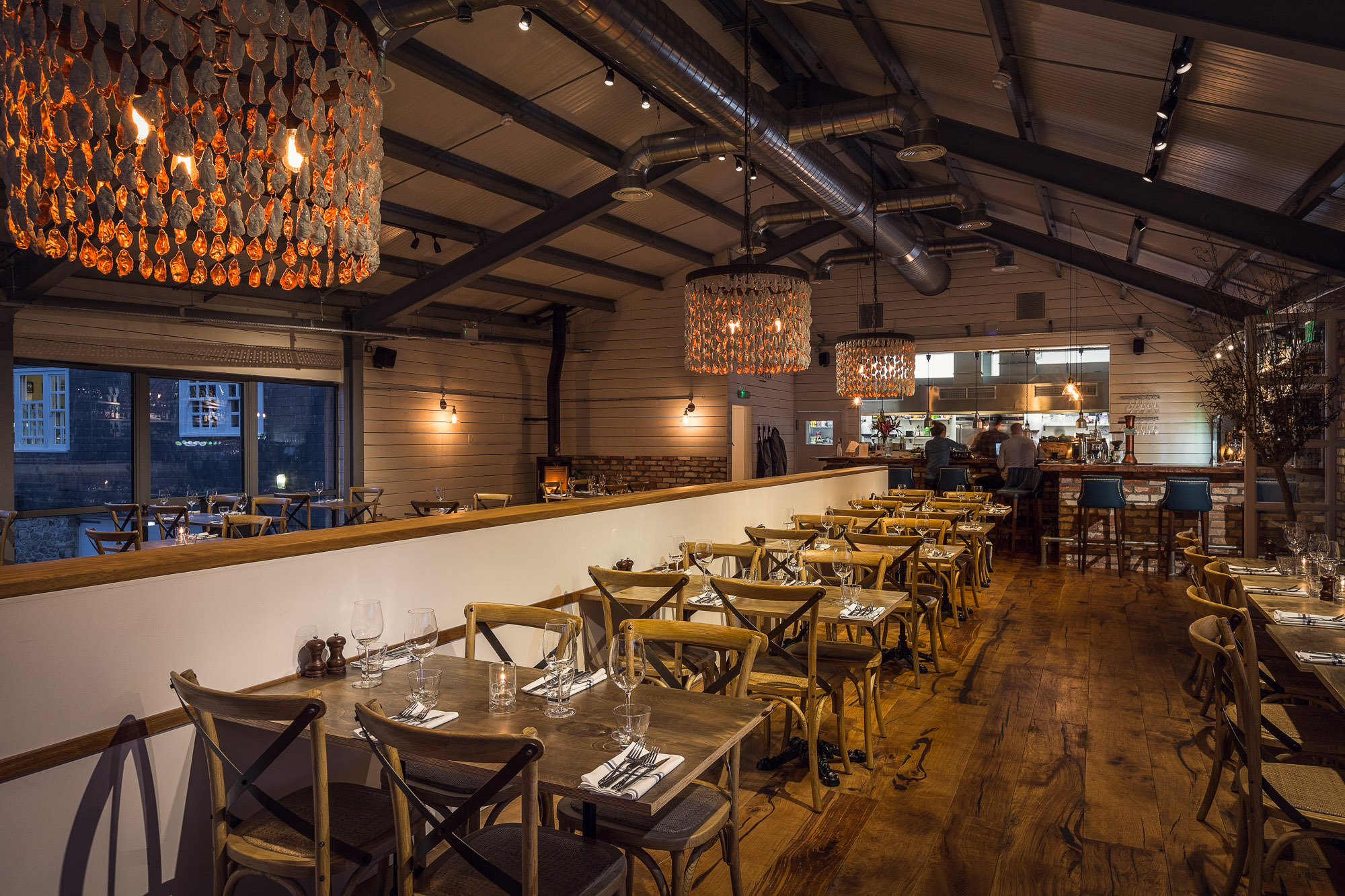
No visit to Charlestown would be complete without an evening at The Longstore, perhaps more than one. Upstairs in an airy, loft-like space with huge windows and lots of wood — as well as, remarkably and pleasingly, surprisingly good acoustics — are served succulent steaks and freshly caught fish, not to mention incredible puddings. Together with locally sourced steaks, a ‘butcher’s cut’ is served each night, celebrating a local farm and rare-breed meat.Cocktails to start were imaginatively presented, as well as delicious, and the service was top notch throughout. Above us were suspended striking chandeliers of gilded oyster shells, which lent a golden light that echoed the shafts of setting sunlight outside. We lingered a long time over our coffees, enjoying the ambience and the flavours, not to mention the sheer joy of being out at a restaurant with friends.
What to do in Charlestown
Put on your comfiest shoes and set off along the South West Coast Path. Turning right at the harbour leads you south towards Mevagissey, a comfortable nine miles away. You could go further, except that the views are such that you will want to frequently stop and gaze, at a kestrel swooping low, at banks of wildflowers, at countless butterflies, at tumbled rocks leading to water as clear and green as the Mediterranean, at the stone memorial to poet A. L. Rowse, the ‘voice of Cornwall’, at the headlands hazy to north and south.
The track is steep and narrow in places, with steps cut into the turf, so you can enjoy a sense of achievement when you stop to puff at the top and, again, enjoy the view. Some dedicated soul had strimmed the whole path, too, an impressive feat, sweeping away the nettles, but leaving the wildflowers.
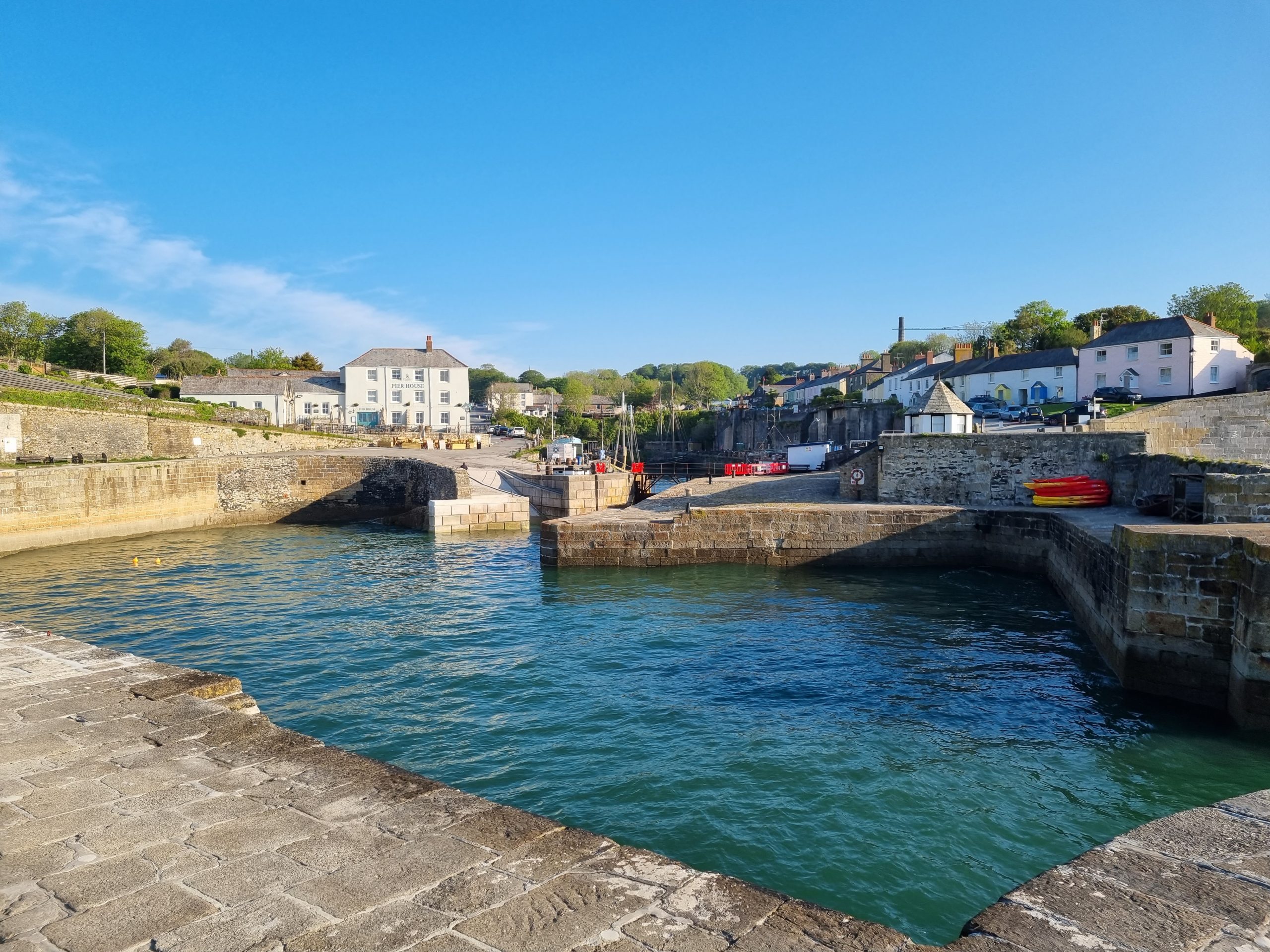
Of course, after such exertions, it would be folly not to enjoy one of the myriad flavours of luxury Cornish ice cream at Treleavens, conveniently placed on the right as you arrive at the harbour of Mevagissey with its brightly painted boats. A taxi ride back to Charlestown takes a mere 15 minutes, slightly galling when you’ve taken all day to walk the route, but excellent news when you’re yearning for fish and chips, preferably eaten with a glass of sparkling wine on the harbour wall.
Charlestown is also within easy reach of the idyllic manor house of Lanhydrock, now cared for by the National Trust, the magical Lost Gardens of Heligan and the huge biodomes of the Eden Project. Inland are the great mounds of china clay, reminders of the mining days of the county, the story of which is told at the Wheal Martyn Clay Works museum. Beneath Charlestown itself are the tunnels — now open to the public — through which was carried the precious cargo, used for everything from paper to toothpaste, to the sea and thence around the world.
Above ground is a collection of combs and cannons, snuff boxes and gold ingots, at Charlestown’s Shipwreck Treasure Museum. All of lost life is there, gathered from the bottom of the sea, from luxury liners and ships of war and small fishing boats. Exquisite dinner services brought all the way from china to be lost on the rocks of England’s shores, horseshoe-shaped manillas traded for slaves, the only intact barrel of coins ever to be recovered from a wreck and cannon balls intended for wars with Spain and France and pirates. Dogs are allowed and even they would be absorbed.
Where to stay
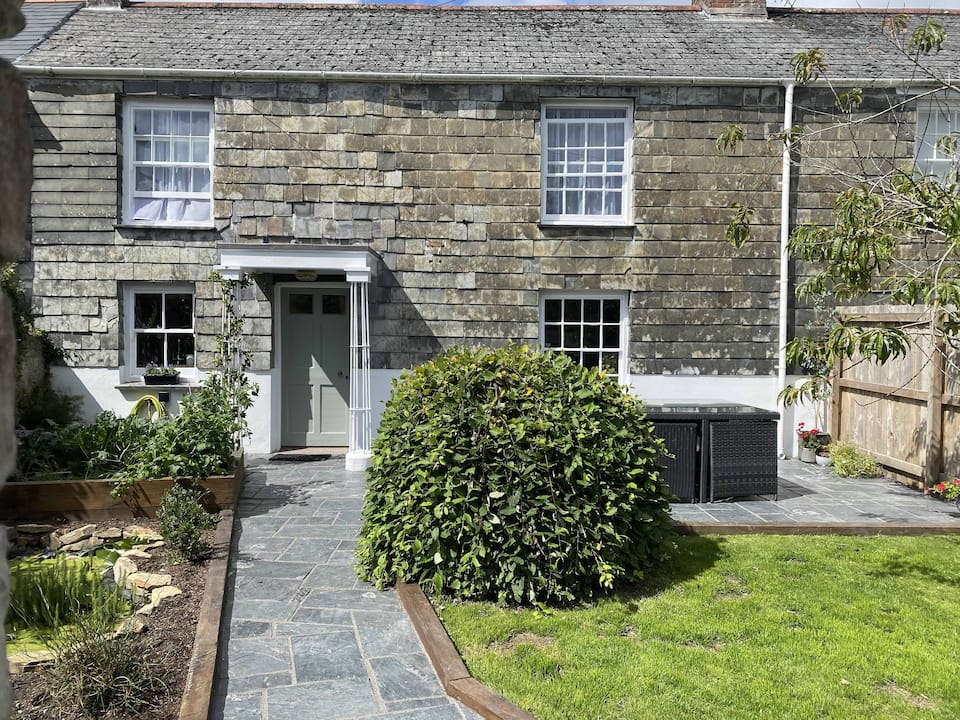
On a chilly evening after a long day in the open air, a huge comfortable chair is a perfect place to curl up and there are few bigger or more comfortable chairs than the one in 62 Charlestown, a two-bedroom cottage with polished wood floors, a superbly equipped kitchen and an enormous shower. Available on Airbnb it is a short walk from the harbour and has a long garden complete with rattan table and chairs on a terrace, the perfect spot for a sun-soaked breakfast of scones and clotted cream (jam first, obviously).
It is also possible to sleep on Our Daddy, a 1921 wooden sailing boat moored in the deep, narrow harbour. Sundowners on deck as cheerful promenaders stroll past and being rocked to sleep by the gentle movement of the calm water would make for a memorable experience.
My Cornish sojourns have principally been on the wild north coast, around the Camel Estuary, but the softer charms of southern Charlestown have worked their magic and I will definitely cross the county again.
Octavia, Country Life's Chief Sub Editor, began her career aged six when she corrected the grammar on a fish-and-chip sign at a country fair. With a degree in History of Art and English from St Andrews University, she ventured to London with trepidation, but swiftly found her spiritual home at Country Life. She ran away to San Francisco in California in 2013, but returned in 2018 and has settled in West Sussex with her miniature poodle Tiffin. Octavia also writes for The Field and Horse & Hound and is never happier than on a horse behind hounds.

